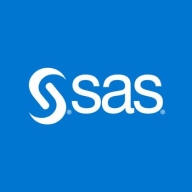

SAS Visual Analytics and Splunk Enterprise Platform compete in the business intelligence and data analytics category. SAS Visual Analytics has the upper hand with advanced statistical capabilities and user-friendly report access, while Splunk excels in adaptability and integration with diverse data sources.
Features: SAS Visual Analytics offers interactive reporting, comprehensive data analysis tools, and forecasting features. Users benefit from its statistical capabilities and the ability to manage large datasets efficiently. Splunk Enterprise Platform provides robust analytics, real-time monitoring, and log management. Its adaptability allows for customization and ease of integration with various data sources, making it a versatile tool for many use cases.
Room for Improvement: SAS Visual Analytics is marked by complexity and high costs, with challenges in installation and integration processes. Enhancements in technical support and data preparation are also needed. Splunk Enterprise Platform is complex for newcomers, expensive, and has a steep learning curve. Users seek more pre-built dashboards and improved automation features.
Ease of Deployment and Customer Service: SAS Visual Analytics offers on-premises deployment with some cloud options, criticized for inconsistent customer support. Splunk provides similar flexibility in deployment but gets mixed reviews on customer service, with some users reporting responsiveness while others see room for improvement.
Pricing and ROI: Both SAS Visual Analytics and Splunk Enterprise Platform are costly, impacting smaller organizations. SAS offers return on investment through powerful analytics but requires expensive add-ons. Splunk, with its pricing increasing with data usage, is regarded as more suited for large enterprises due to its pricing model.
The enterprise subscription offers more benefits, ensuring valuable outcomes.
Splunk Enterprise Platform saves approximately 20 to 30 percent of my time without having to perform different actions separately.
They provide callbacks to ensure clarity and resolution of any queries.
Some products can automatically scale, but Splunk requires manual configuration changes to achieve scale, which is slightly outdated compared to modern technologies.
Splunk Enterprise Platform is scalable to some extent, which is acceptable.
SAS Visual Analytics is stable and manages data effectively without crashing.
It requires managing configuration files and processing operations manually, limiting its auto-scaling capabilities.
In terms of configuration, I would like to see AI capabilities since many applications are now integrating AI.
The deep learning capabilities need enhancing, especially on Splunk Cloud, where customers find it challenging to use deep learning tools without setting up backend computing resources.
It is complex for inexperienced cybersecurity engineers and requires experienced personnel to handle it effectively.
I feel this can be improved in terms of performance.
The pricing model is based on ingesting data sizes, not user count, and includes a free tier for up to 500 MB of daily data.
Splunk Enterprise Platform is expensive.
The ability to query information from our Excel data into SAS to view specific data is invaluable.
It saves time by allowing me to perform actions on a single platform instead of managing them separately.
Splunk's Machine Learning Toolkit is offered without charge, allowing users to incorporate machine learning in their business logic, aiding in procedures like threat hunting.
The features that have proven most effective for real-time data analysis include parts of the platform and its automation capabilities.


SAS Visual Analytics is a data visualization tool that is used for reporting, data exploration, and analytics. The solution enables users - even those without advanced analytical skills - to understand and examine patterns, trends, and relationships in data. SAS Visual Analytics makes it easy to create and share reports and dashboards that monitor business performance. By using the solution, users can handle, understand, and analyze their data in both past and present fields, as well as influence vital factors for future changes. SAS Visual Analytics is most suitable for larger companies with complex needs.
SAS Visual Analytics Features
SAS Visual Analytics has many valuable key features. Some of the most useful ones include:
SAS Visual Analytics Benefits
There are many benefits to implementing SAS Visual Analytics. Some of the biggest advantages the solution offers include:
Reviews from Real Users
Below are some reviews and helpful feedback written by PeerSpot users currently using the SAS Visual Analytics solution.
A Senior Manager at a consultancy says, “The solution is very stable. The scalability is good. The usability is quite good. It's quite easy to learn and to progress with SAS from an end-user perspective.
PeerSpot user Robert H., Co-owner at Hecht und Heck GmbH, comments, “What I really love about the software is that I have never struggled in implementing it for complex business requirements. It is good for highly sophisticated and specialized statistics in the areas that some people tend to call artificial intelligence. It is used for everything that involves visual presentation and analysis of highly sophisticated statistics for forecasting and other purposes.
Andrea D., Chief Technical Officer at Value Partners, explains, “The best feature is that SAS is not a single BI tool. Rather, it is part of an ecosystem of tools, such as tools that help a user to develop artificial intelligence, algorithms, and so on. SAS is an ecosystem. It's an ecosystem of products. We've found the product to be stable and reliable. The scalability is good.”
Explore data of any type and value — no matter where it lives in your data ecosystem.
Drive business resilience by monitoring, alerting and reporting on your operations.
Create custom dashboards and data visualizations to unlock insights from anywhere — in your operations center, on the desktop, in the field and on the go.
Use data from anywhere across your entire organization so you can make meaningful decisions fast.
We monitor all Data Visualization reviews to prevent fraudulent reviews and keep review quality high. We do not post reviews by company employees or direct competitors. We validate each review for authenticity via cross-reference with LinkedIn, and personal follow-up with the reviewer when necessary.